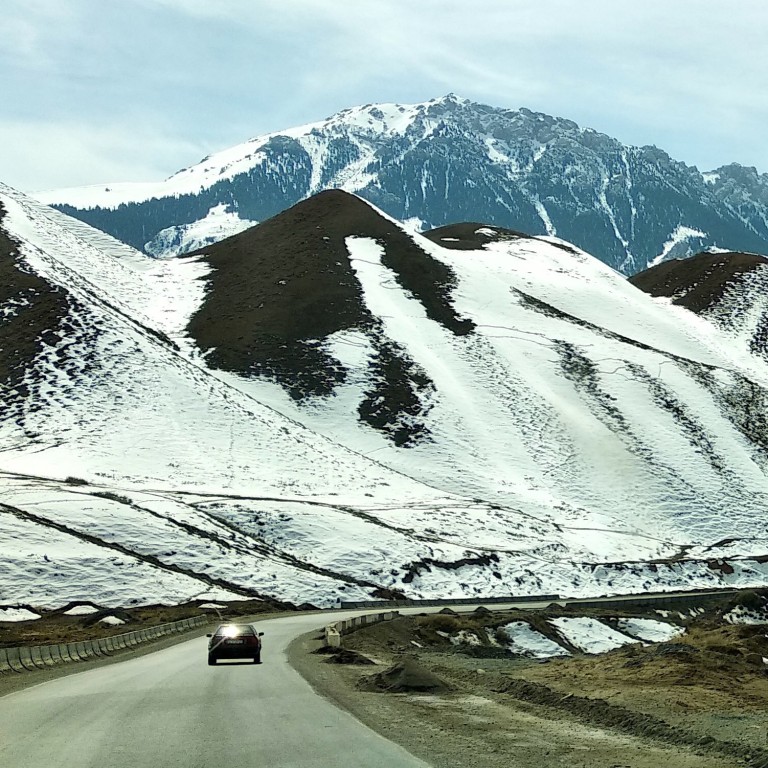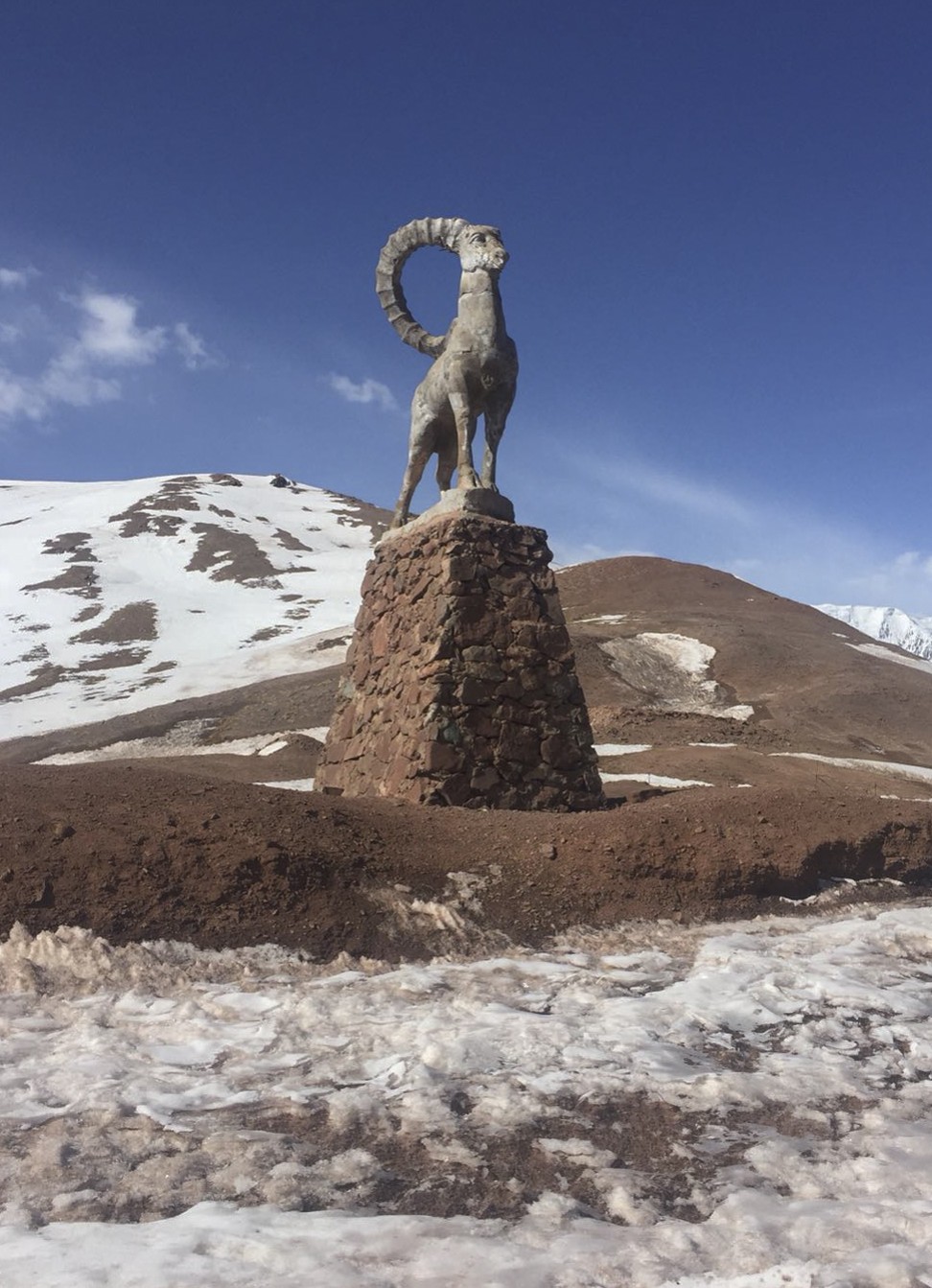
China’s belt and road extends to Kyrgyzstan, but are new transport links worth all that debt?
- Beijing’s partners in Europe and Southeast Asia command much attention at this year’s Belt and Road Forum
- But there is much China-backed development in Central Asia – and much concern over whether Kyrgyzstan will pay back the billions it has borrowed
The new Chinese-built highway from Bishkek, the capital of Kyrgyzstan, to Naryn winds its way some 350km through stunning mountain scenery. But that’s not the only appeal of the new route; according to the local driver, the journey used to take more than eight hours, but now he says it takes just half that time.
Business leaders across Asia like Beijing’s belt and road vision. But China’s rising influence is giving some the jitters
Kyrgyzstan, a former Soviet republic, is a predominantly Muslim nation that is home to 6.2 million people, many of whom live a seminomadic lifestyle based on rearing livestock. Chinese companies, and sometimes Chinese labour, have built the roads in this rugged landscape, while the work has been largely financed by loans from the state-run Export-Import Bank of China (Chexim) – raising worries that the country may fall into the infamous “debt trap” that China has been accused of deploying.
“In a few years, China has become the major lender to Kyrgyzstan,” notes Dr Roman Mogilevskii, associate director of the University of Central Asia’s Institute of Public Policy and Administration (IPPA). “How to pay back these debts could become an issue.”

In a paper titled “Kyrgyzstan and the Belt and Road Initiative” published this month, Mogilevskii argues that Kyrgyzstan could become a major beneficiary of the belt and road plan, but warns that 42 per cent of the government’s external debts – comprising 24 per cent of its GDP – are owed to Chexim.
Those debts have leapt from US$9 million in 2008 to US$1.7 billion in 2017 – an increase of almost 189 times in less than 10 years. Mogilevskii does point out, however, that Chexim’s 2 per cent interest rates make it far cheaper to borrow from China than from local banks, where interest is about five times higher.
There are four major road infrastructure projects in Kyrgyzstan that have been financed by China to the tune of US$1.3 billion. These projects are parts of the CAREC corridors – short for Central Asia Regional Economic Cooperation – which have been designed to improve transport links in Central Asia and connect the region with China, South and West Asia, and Europe.
Mahathir’s belt and road balancing act confirms Malaysia’s ‘middle power’ ambitions
China is also investing almost US$1 billion in energy projects that could modernise the country’s electric power transmission and could make Kyrgyzstan a future energy supplier to South Asia.
Earlier this month, IPPA organised a one-day seminar to discuss the sustainable exploration of mineral deposits in Kyrgyzstan and neighbouring Tajikistan, which was attended by a number of Chinese business representatives.
Tension caused by the movement of Chinese companies into this sector worries Dr Kemel Toktomushev, a research fellow at the IPPA who was among the seminar’s organisers.
“Although historic antagonism with China is long gone, at the ground level [there is still a distrust] of China,” he said.

Toktomushev argues that at this level as well as the policy level there is a lack of understanding of the belt and road plan. “For many, the [initiative] is about China. Here, the road building is seen more as Chinese infrastructure investments [than Kyrgyz development],” he said.
There is also resentment over the influx of Chinese workers for these infrastructure projects. “We owe them billions of dollars because when we ask for money, they give. But they [also] send their companies and their workers to do the work,” complained Symikh, a Bishkek-based businessman who asked for his surname to be withheld. “If they give us money, we can hire our own people to do the work.”
Bangladesh eyes alternatives to China’s belt and road loans as it seeks to fund future development
In January, more than 300 people demonstrated at the capital’s city square, urging the government to deport undocumented Chinese workers and legislate to prevent Chinese citizens getting Kyrgyz citizenship through marriage. “Chinese men marry Kyrgyz girls and have children here. We are not happy,” Symikh said.
In response, the government told the protesters they should be grateful there was a neighbour willing to help Kyrgyzstan. In February, Transportation Minister Zhanat Beisenov told parliament that Bishkek would ask Chexim to provide a grant of US$56 million to help complete a long-delayed major road project. The multimillion dollar project currently underway to upgrade the capital’s streets was also funded by the Chinese via a grant.

Many local analysts are critical of the substantial borrowings for infrastructure projects, and feel there is also a lack of vision on how to exploit the new connectivity. Options, they say, include developing tourism in one of the most scenic countries in the region, and developing value-added local industries based on Kyrgyzstan livestock economy, as there is the potential for easier export of locally processed and packaged meat products.
For the latter sector, the trade war between the United States and China may also provide some openings into China.
“The [belt and road] projects have great potential to develop tourism here,” said Asylbek Rajiev, executive director of the Kyrgyz Community Based Tourism Association. He points out, however, that visa restrictions for Chinese travellers prevent Kyrgyzstan from tapping into the lucrative Chinese tourist market. “Old thinking restricts us,” he said.
China and India look to cooperate despite belt and road disagreements
Mogilevskii from the IPPA argues that Beijing is also playing nations in the region against each other. “There is a possibility China is intentionally creating competition between routes,” he said, pointing out that there are Chinese-built transit routes, and that Beijing provided funding for two railways in neighbouring Kazakhstan, through which Chinese goods can go west – and also backed roads and ports in Pakistan.
The Chinese embassy in Kyrgyzstan did not respond to an interview request.
The two countries are currently negotiating a huge project to build a high-speed railway across the rugged country, which could speed up transport between East Asia and Europe via West Asia.
“Initial assessment is estimated at US$5 billion; Kyrgyzstan’s GDP today is [around] US$8 billion. You can’t repay this amount of debt,” Mogilevskii said. “It will be very costly to maintain the railway during winter. Why should we take on such debts for a project that has no clear economic value to the country?” ■

